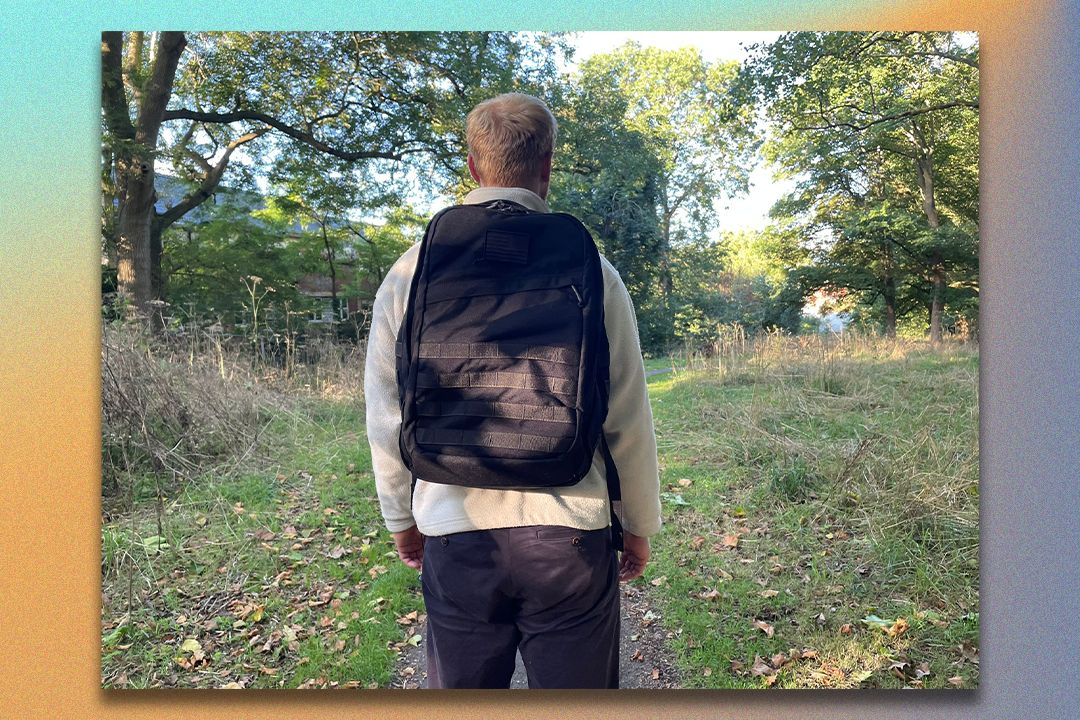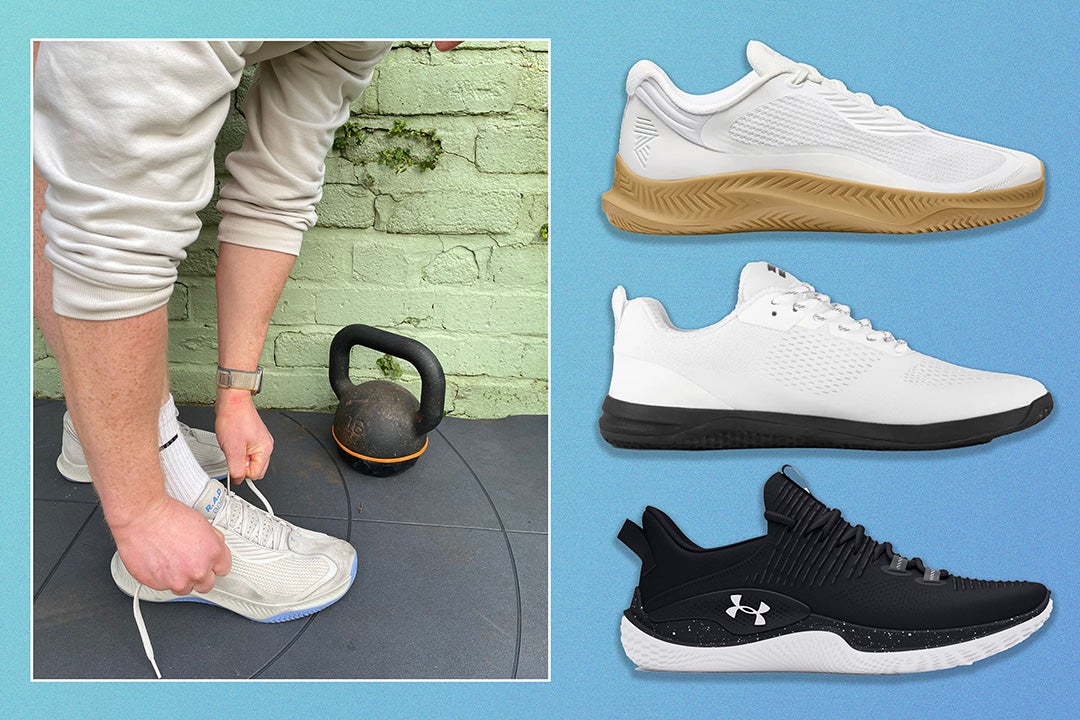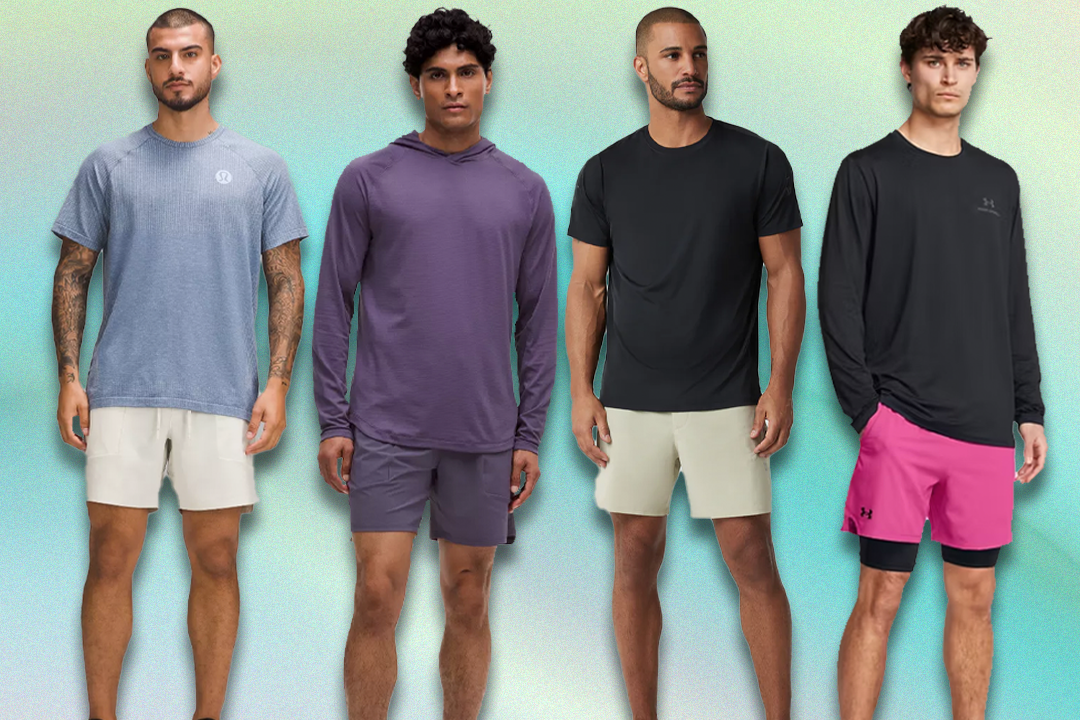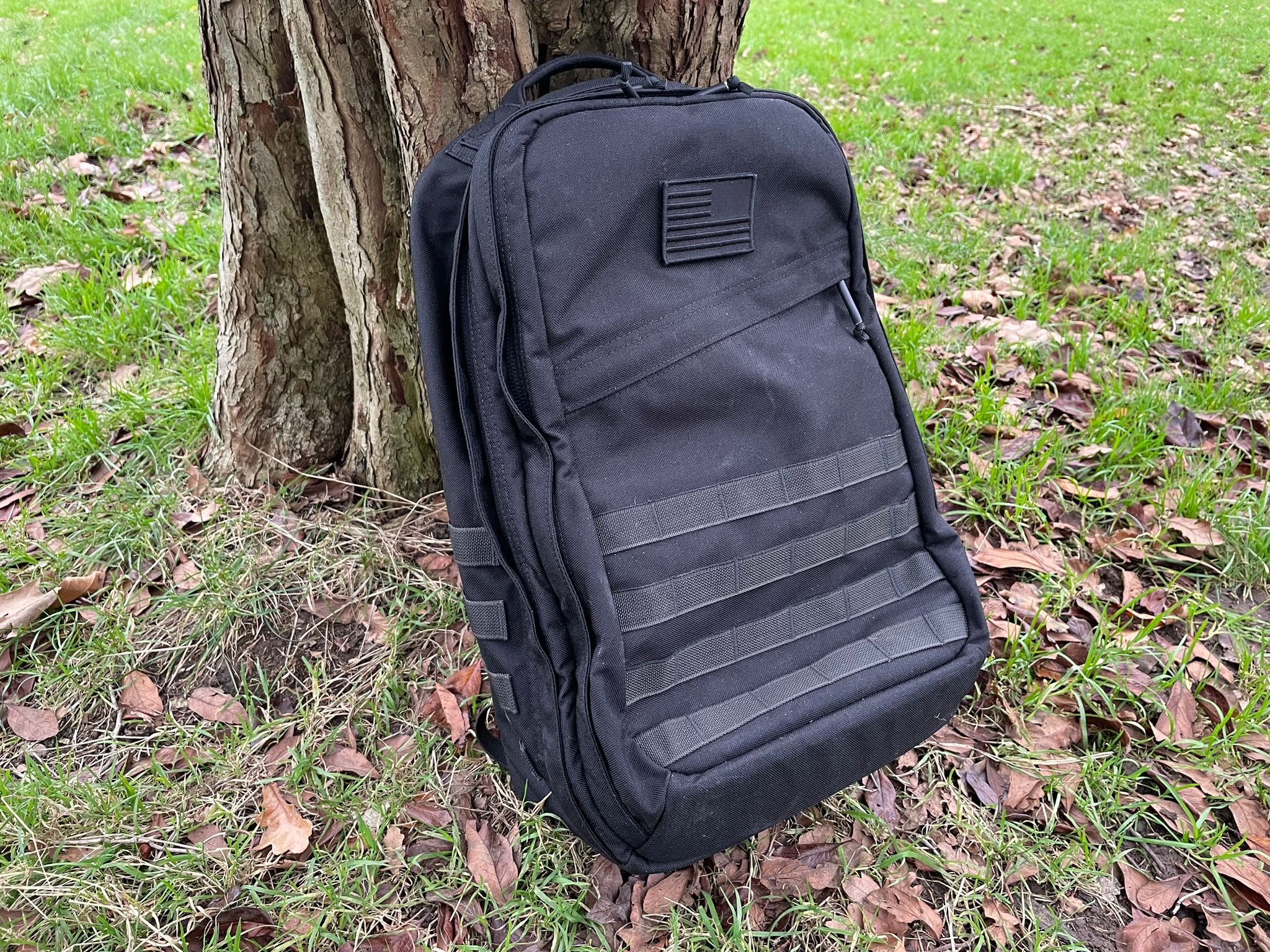
The Independent's journalism is supported by our readers. When you purchase through links on our site, we may earn commission.
Best weighted vests and backpacks for rucking, tested by a fitness writer
Rucking is the fitness hack that actually works – here’s the best kit to get you started
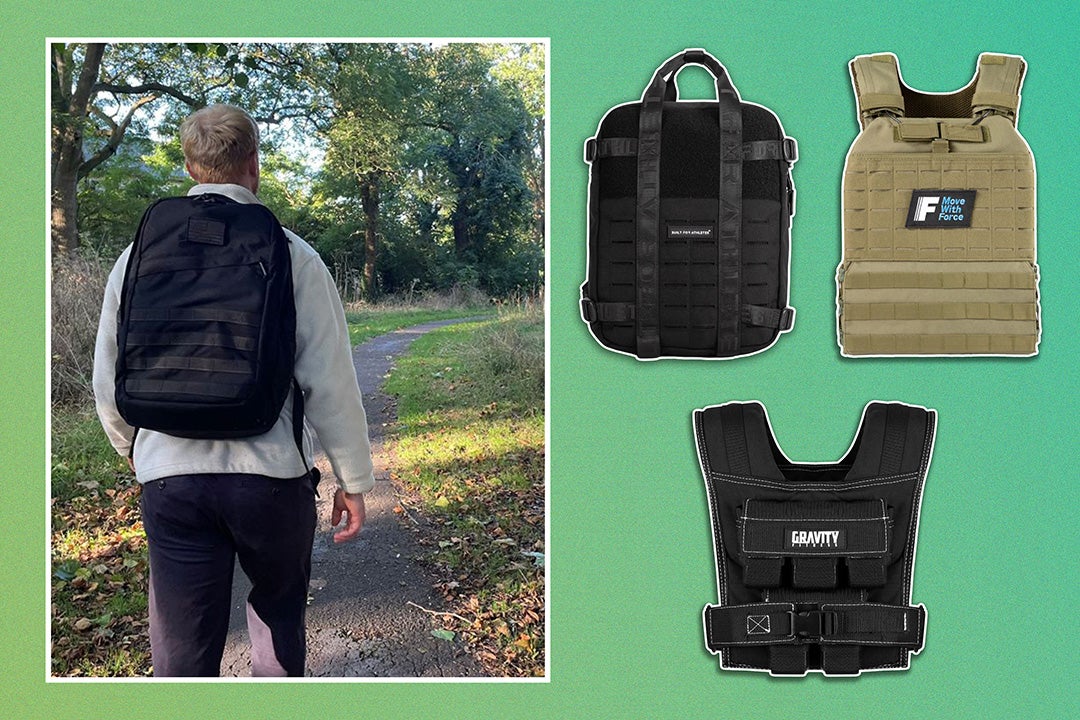
Rucking might be the most practical way to get your fitness fix – simply strap on a weighted vest or backpack then go for a walk. No wonder its popularity has boomed in recent years, with podcasting professor and health czar Andrew Huberman among the most prominent rucking fans.
I’m also a convert, having tried walking 10,000 steps a day with a weighted backpack and been impressed with the results. Despite being low-impact and relatively low-effort when compared to a run or trip to the gym, rucking or weighted walking can enhance heart and lung health, strengthen bones and deliver bonus mental health perks too.
Beginners can sling on any old backpack and lob a load of household items in there to get started. But once you start rucking regularly and lugging larger weights around, you’ll want to invest in some purpose-built gear for a more comfortable walking workout. That’s where I can help.
I’ve tried a selection of the best weighted backpacks and weighted vests for rucking, with options to suit a wide range of budgets and fitness goals. Here are the ones that impressed me the most.
How we tested:
Rucking is the focus of this guide, so I spent plenty of time racking up the miles while wearing each featured product.
I rated each on comfort, performance and capacity, noting any pinch points, added padding or bonus features which made them more impressive. For the weighted backpacks, extra points were on offer for solid functionality – I like adding weight to my everyday bag, turning menial tasks like taking the dog for a walk into a guerilla workout, so it’s handy to have some extra storage options.
I also tested each product’s strength training credentials, wearing it for activities like running, weighted pull-ups and gymnastic rings exercises, as well as a dedicated rucking workouts where the bag or vest is used as a free weight in its own right.
From these tests, I was able to determine the strengths and weaknesses of each bag or vest. Read on for my favourites.
The best weighted vests and weighted backpacks for 2025 are:
- Best weighted backpack - GoRuck GR2: £280, Goruck.eu
- Best adjustable weighted vest - Gravity Fitness weighted vest: £79.95, Gravity.fitness
- Best budget weighted backpack - Force Fitness weighted backpack: £89.95, Force-fit.co.uk
- Best for everyday use - Built For Athletes pro series 45l backpack: £199.99, Builtforathletes.com
- Best plate carrier - Force Fitness rucking plate carrier: £39.95, Force-fit.co.uk
GoRuck GR2 40l

- Best: Weighted backpack
- Weight limit: Stress tested to 400lb
- Primary material: 1000D cordura
- Capacity: 40L
- Dimensions: 32cm x 56cm x 23cm
- Why we love it
- Waterproof and durable
- Padded straps and back panel for comfort
- Plenty of compartments for additional storage
- Take note
- Expensive
- Hip belt costs extra as an optional add-on
Predictably, given its name, GoRuck has established itself as the go-to brand for rucking equipment. Its products don’t come cheap, but having tried a few, the quality is undeniable. For this reason and more, the versatile GR2 is my pick for the best weighted backpack overall.
The primary material is 1000D cordura – a strong, waterproof, nylon fabric which complements the GR2’s militaristic design by feeling practically bombproof. I’ve used it in all weathers, mistakenly plopped it down in puddles and used it to haul heavy weights up some sizable hills, and the bag has taken everything in its stride.
The maxium weight capacity needn’t be a concern either; when I asked GoRuck for the weight limit, a spokeswoman said its rucksacks have been stress tested to 400lb.
I also liked how a sleeve inside the bag holds any weight plates securely in a comfortable position – if you use a standard backpack, any heavy items will invariably sink to the bottom and shift around as you move, making for an unpleasant rucking experience.
This, twinned with the generously padded back panel and straps, meant I was able to lug decent loads around without the bag causing me any discomfort – aching legs aside.
The GR2 is also a solid choice for everyday use, with a 40 litre capacity and plenty of pockets for stashing work gear, sports kit and other essentials. There’s even a separate, heavily cushioned laptop compartment. So, if you’re looking to turn menial tasks like commuting into low-key workouts, it’s a great option.
Gravity Fitness adjustable weighted vest
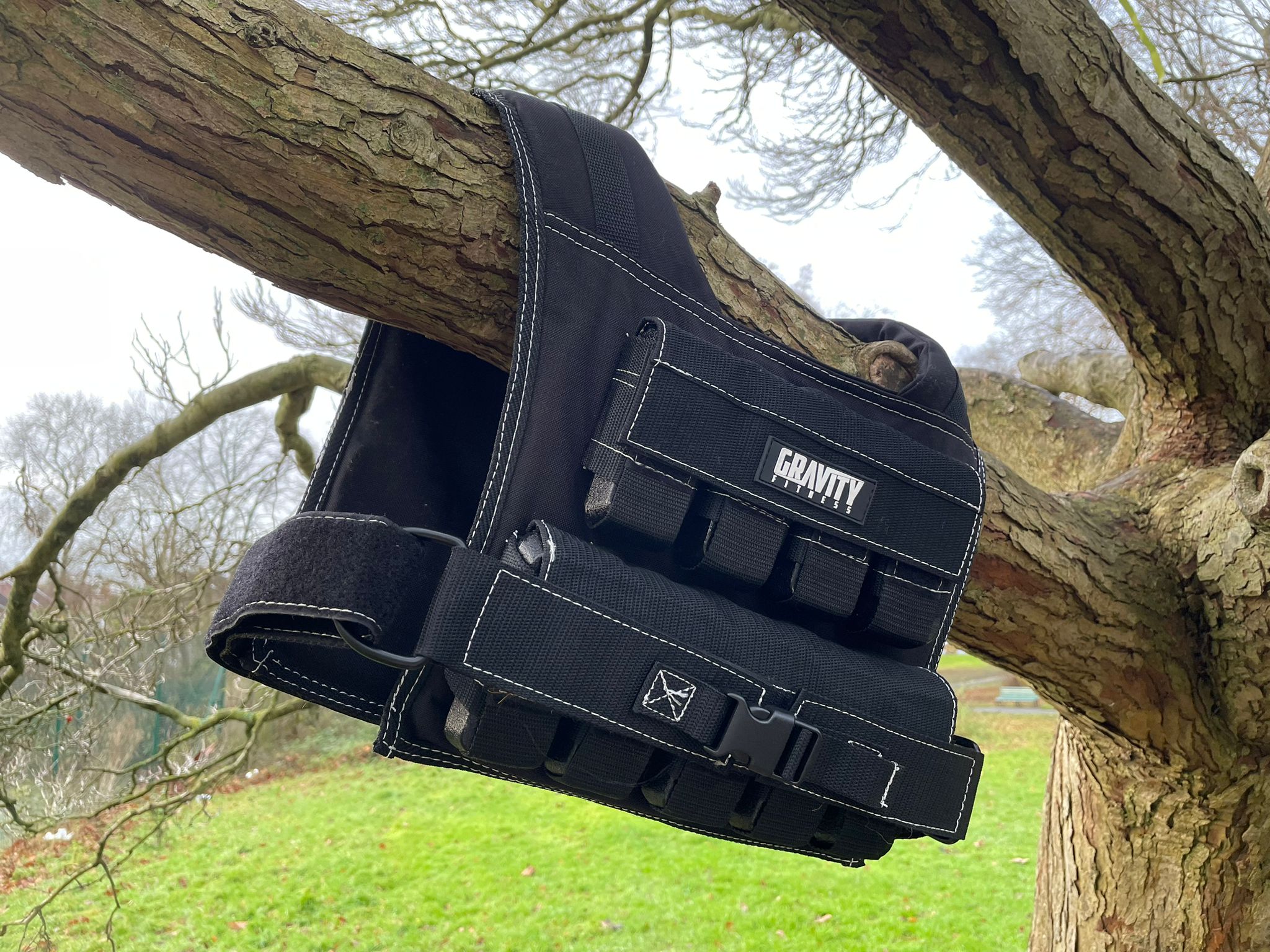
- Best: Adjustable weight vest
- Weight limit: 30kg
- Material: Nylon
- Capacity: -
- Dimensions: -
- Why we love it
- Easy to adjust the weight
- Adjustable velcro straps
- Hard-wearing
- Take note
- Shape isn’t a good fit for dynamic exercises like burpees
- Stands out a bit
Weighted vests can be split into two camps; tactical and adjustable. Tactical vests have broad, thin metal weight plates that sit close to the front and back of the body, so they don’t get in the way during dynamic exercises like burpees. This makes for a more secure, svelte fit, but changing the weights can be a time-consuming task.
Adjustable weight vests like this one, on the other hand, have easy-access pockets designed to hold small metal weights. To change the load you’re carrying, you need only add one in or take one out, and I found this took a matter of seconds with the Gravity Fitness vest. The fact that there were 18 1kg metal weights in total also meant I could make incremental differences to the amount I was lifting.
For this reason, I really enjoyed using it for calisthenics training with a set of gymnastic rings. It helped me add load to exercises like dips and ring rows, upping their difficulty for an effective workout.
The vest also sat comfortably on my shoulders when I wore it for a walk, with the heavily padded straps feeling plush under 20kg. The adjustable velcro chest strap was a bit fiddly to set up at first (there’s a handy video on the Gravity Fitness YouTube channel to help with this). But once I’d adjusted the front and back to suit my frame, I found it provided a more secure feel than most weighted vests I’ve tried – perfect for press-ups.
Made of robust nylon and featuring a series of chunky pockets, the somewhat aggressive-looking vest did draw a few funny glances when I wore it at the park, but it worked just fine for rucking.
Force Fitness weighted backpack
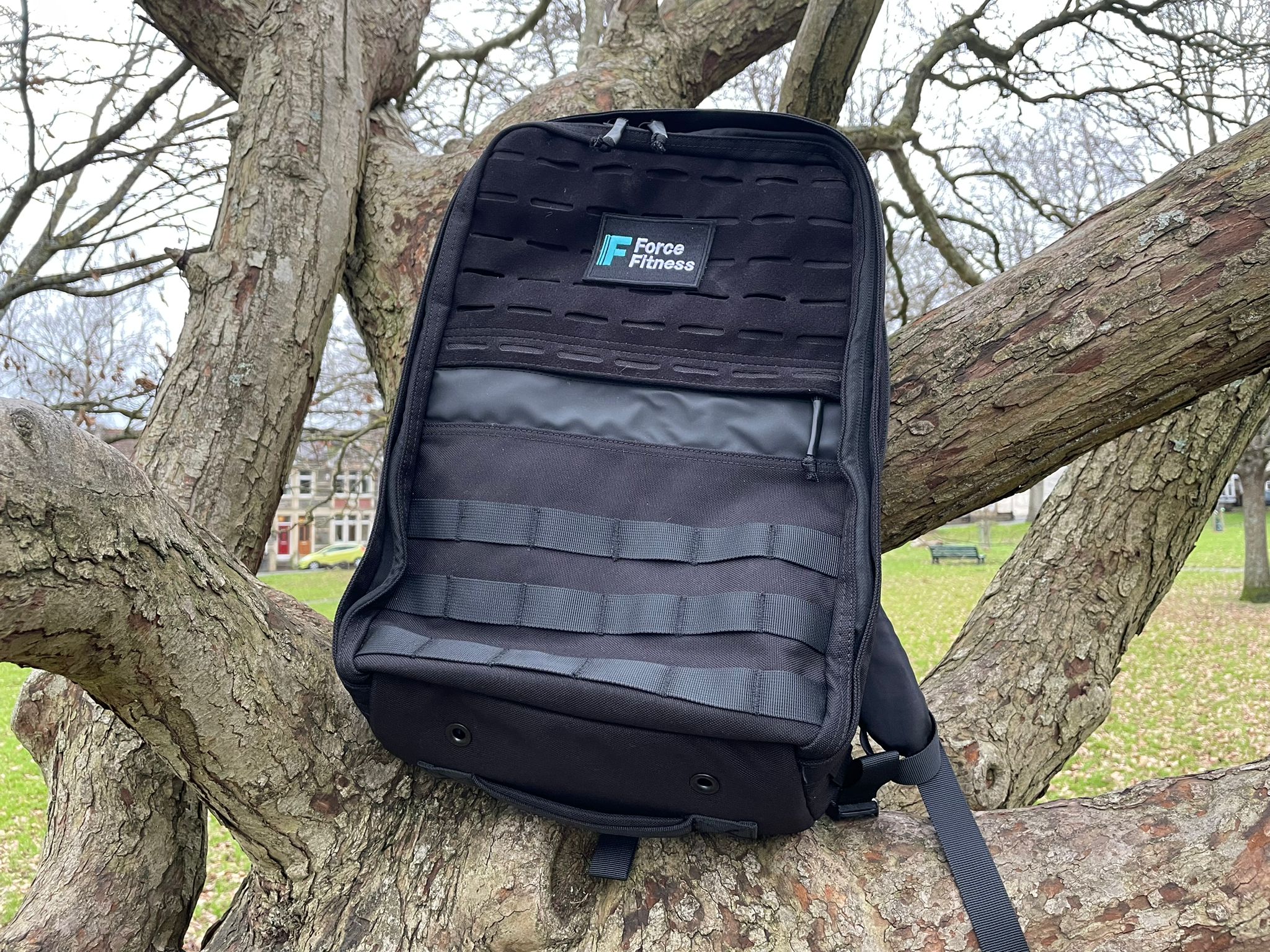
- Best: Affordable weighted backpack
- Weight limit: 60kg
- Primary material: 1050 cordura
- Capacity: 20.5L
- Dimensions: 30cm x 45cm x 15cm
- Why we love it
- Affordable
- Sternum strap for a secure fit
- Padded shoulder straps and back panel for comfort
- Take note
- Sags slightly when carrying heavier weights
If you want to carry more than a few kilograms on your back, but don’t want to drop three figures on a premium rucksack, this Force Fitness bag is your best bet. It retails for less than £90 (sans-weights), yet has all the hallmarks of a top rucking companion.
It’s smaller and more innocuous in its design than the GoRuck options, but I found it still held a couple of weight plates with ease. The back panel and straps are padded for comfort, an internal pocket keeps the plates in place, and the bag comes with an in-built sternum strap for a secure fit.
Despite its significantly lower price tag, it’s still made of hardy, waterproof cordura material, and has a decent 20.5 litre capacity comprising several useful compartments. It also has handles on the top, bottom and both sides, which are handy for rucking workouts containing exercises like overhead presses and suitcase carries.
Testing it, I was able to carry 10kg for miles upon miles without complaint. When I upped the load to 15kg-plus, the bag sagged a little and bounced a bit at a more vigorous pace – it can handle up to 60kg and still functioned fine for walks, I just found it was marginally less comfortable than the premium GoRuck offerings.
However, with its genre-defying price, I’m a big fan of how this bag is working to democratise rucking. If people are looking for an affordable route into this trendy and effective fitness pursuit, it’s a brilliant option.
Built For Athletes pro series 45l backpack
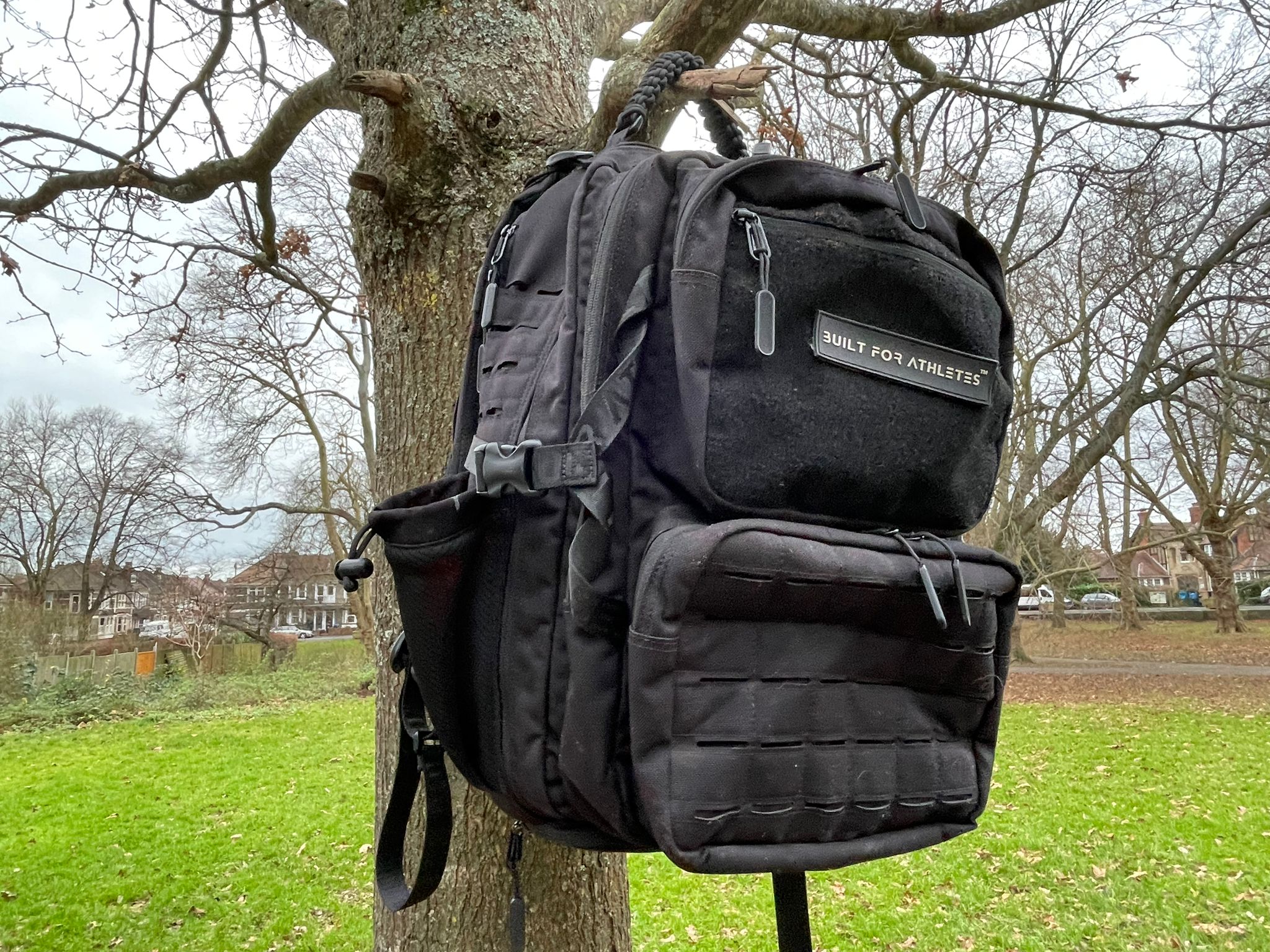
- Best: Plate carrier for walking
- Weight limit: 25kg
- Material: N/A
- Capacity: 10L
- Dimensions: 34cm x 52cm x 15cm
- Why we love it
- Plush padding on the back and straps
- Robust
- Plenty of storage space and separate compartments
- Take note
- Large size makes it impractical for workouts
- Weights sit quite low in the bag
- Expensive
If something doesn’t fit in a Built For Athletes backpack, it’s probably not worth carrying. These Tardis-like bags have pockets and compartments galore, easily holding two pairs of gym trainers and all my other weightlifting paraphernalia – and there’s a lot of it.
This monstrous pro series 45 litre backpack tops my roundup of the best gym bags, with the hidden waterproof compartment on the underside repeatedly proving to be a lifesaver on gym-to-office days. It’s even seen me through a couple of Glastonbury festival trips.
The premium-feeling bag also deserves its place on this list of the best weighted backpacks, having been load-tested to 30kg. To ruck with it, you can fill it up with weighty household items, or slip a weight plate into the cushioned laptop compartment if you want to lug something a bit heavier around.
The ample padding on the back panel and straps prevented any unpleasant pressure on my back or shoulders while carrying weights, and the waist strap made for a secure fit when walking.
However, to address the elephant in the room, the bag is massive. When full, it extends a long way backwards, and is unlikely to make you hugely popular on public transport (although there are smaller Built For Athlete options available). This size (and the fact the weight sits lower in the bag, rather than against the mid- to upper-back like some competitors) means it isn’t something I’d wear for running or workouts. But for walking and generally carrying things from A to B, it’s hard to fault.
Force Fitness rucking plate carrier
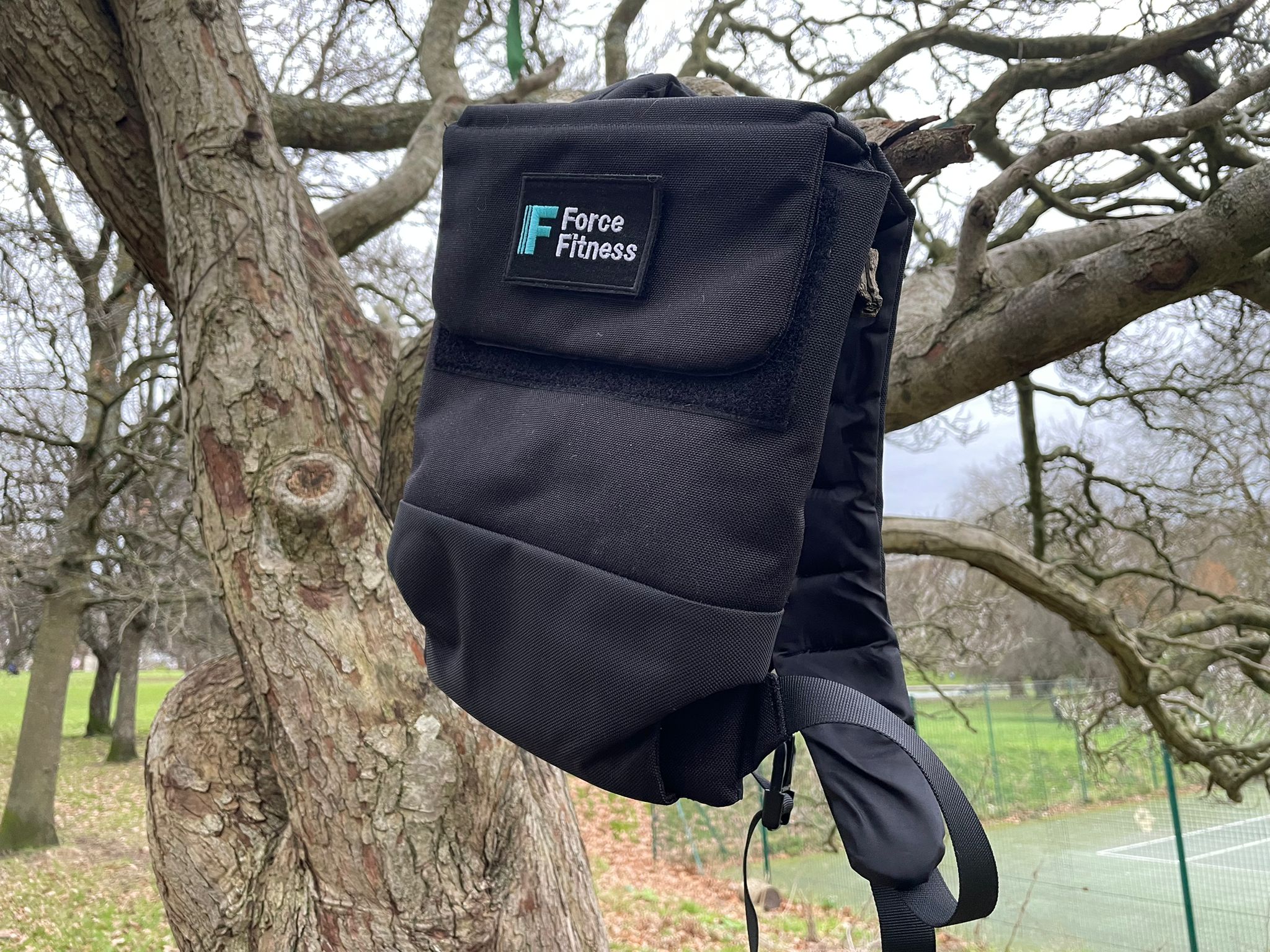
- Best: Plate carrier for rucking
- Weight limit : 20kg
- Primary: N/A
- Capacity: -
- Dimensions: 25cm x 34cm x 6cm
- Why we love it
- Easy to use
- Comfortable padded shoulder straps
- More affordable
- Take note
- Limited versatility
- Straps felt tight on shoulders during overhead exercises
Plate carriers do exactly what they say on the tin and very little more, giving them a lower price point. This makes them a great option if you want to buy some specialist rucking kit without parting with too much cash.
Made from hardy 1050 cordura nylon, this Force Fitness plate carrier is as simple and effective as they come. It has three straps, one for each shoulder and another for the chest, and you can adjust these quickly for a secure fit by yanking or loosening the plastic clasps. A weight plate slots into the top and is secured into place with a velcro flap, then you’re good to go.
I prefer plate carriers to weighted backpacks for anything more than walking, as they’re smaller and hold the weight plate tighter against your upper back to give you more freedom of movement. This was the case here, with the carrier feeling comfortable for running and press-ups.
The shoulder straps felt a little restrictive for exercises where I had to reach my arms overhead, such as pull-ups, so I’d stick to weighted vests for these if given the choice. But for more challenging treks where I didn’t need any extra storage, this was my go-to.
Force Fitness weighted vest
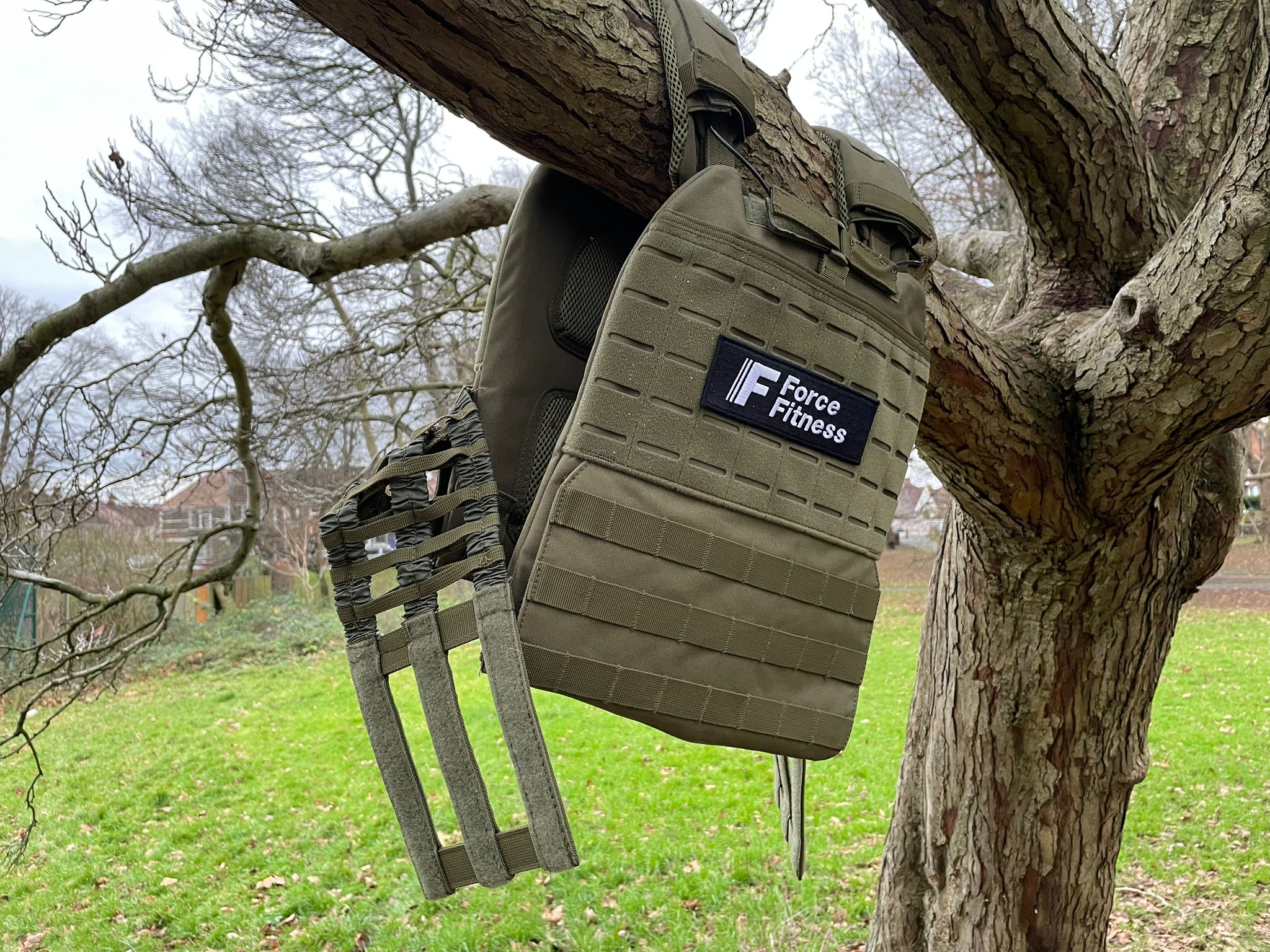
- Best: Tactical weight vest
- Weight limit: 25kg
- Primary material: N/A
- Capacity: 10L
- Dimensions: -
- Why we love it
- Multiple interchangeable weight plates
- Comfortable padded shoulder straps
- Slim profile is good for CrossFit and dynamic exercises
- Take note
- Tricky to change weight
Weighted vests have pros and cons when compared to weighted backpacks. On the negative front, it’s unlikely you’ll be able to wear a weighted vest in public without drawing attention to yourself – subtle rucking, this is not. But they do sit securely and distribute their weight more evenly across the front and back of your body, making them a better fit for higher-intensity exercises like running and CrossFit.
I found this Force Fitness vest was a handy training tool for adding weight to bodyweight exercises like press-ups, pull-ups, dips and burpees, helping me upgrade my training whether I was in the gym or working out at home.
The adjustable velcro straps allowed me to find a snug fit, no matter if I was wearing a chunky jumper or a t-shirt, and the slimline design meant it didn’t get in the way while working out – even during exercises like chest-to-floor burpees, making it a good fit for hardcore CrossFitters or anyone tackling the Murph hero workout.
It weighs 2kg on its own, then comes with a selection of weight plates depending on the option you buy; vest only, 7kg, 10kg, 15kg or 20kg. Testing the 20kg version, I had two 4kg and four 2.5kg plates to play with. And while loading them into the vest was a bit finicky (there are a lot of moving parts, and plenty of velcro) they felt secure when in place. I also liked being able to adjust the load I was carrying to suit the exercise I was doing, although it does cost extra to buy more plates.
Built For Athletes rucking 10L plate backpack
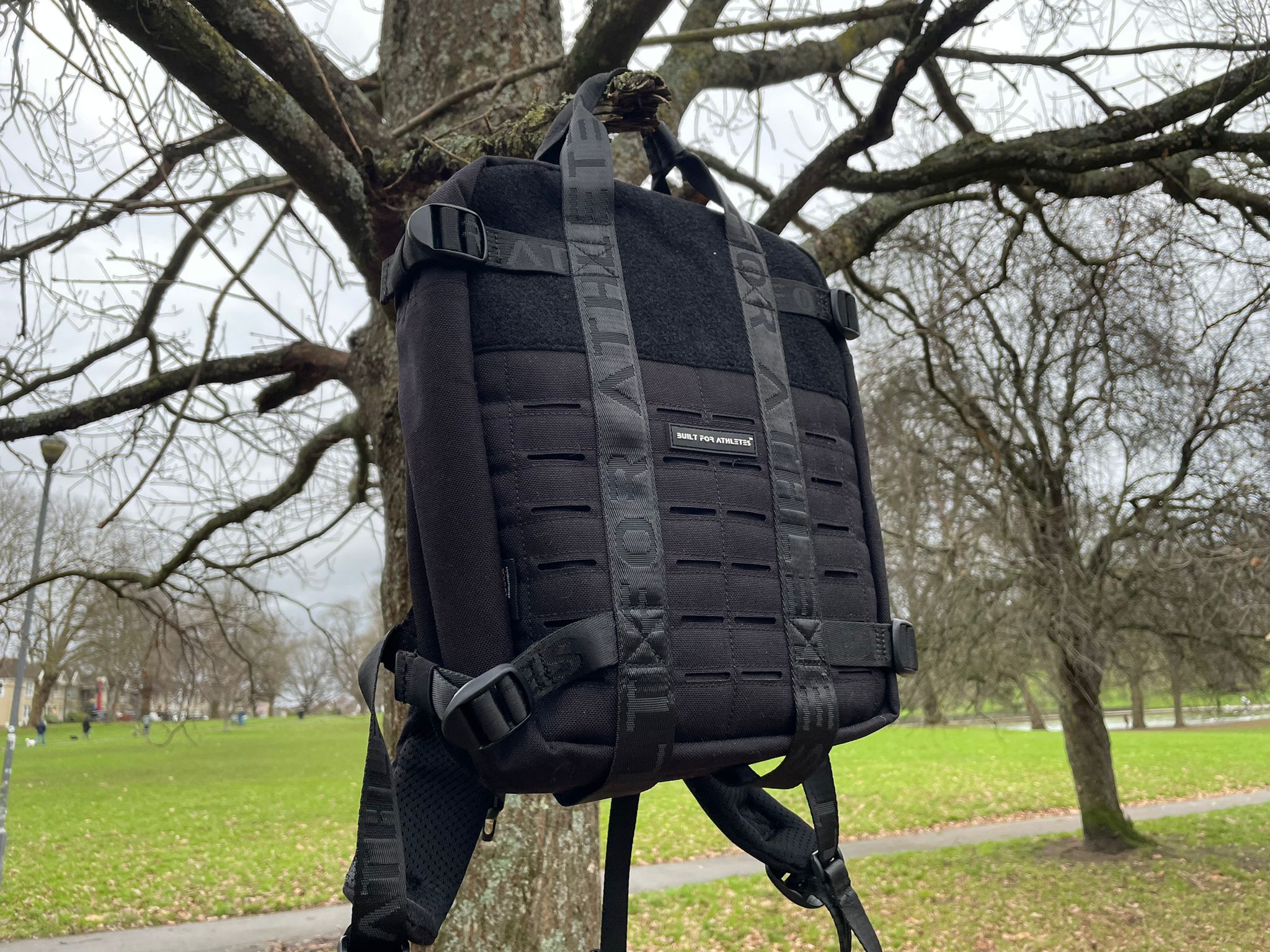
- Best: Weighted gym bag
- Weight limit: 25kg
- Material: N/A
- Capacity: 10L
- Dimensions : 30cm x 24cm x 2cm
- Why we love it
- Generous amount of padding for comfort
- Bonus 10L of storage
- Chest strap for a secure fit
- Take note
- Slight bounce at heavier weight
Built For Athletes is known for making gigantic gym bags, so this bag is a departure from the norm for the brand: it’s small. The bite-size backpack has a 10 litre capacity, an adjustable chest strap and a removable velcro compartment inside for holding a weight plate or two. It also comes with a 10kg plate, making it an attractive prospect for those new to the rucking scene
As with all Built For Athlete bags, the straps and back panel are generously padded, and the adjustable straps work well to hold the plate nice and high on the back. Together, these factors made the bag incredibly comfortable to wear while walking, regardless of how much weight I was carrying. The water resistant material feels hardy too, and there’s a textured section on the front if you have any velcro Hyrox patches you want to show off.
For normal walking and even weight pull-ups, the bag felt great. But I found that, even with the straps pulled tight, the velcro plate compartment moved a little within the bag during more intense activities like fast-paced walks. As a result, it didn’t feel as secure as the likes of the Force Fitness plate carrier.
But it has the advantage over the plate carrier of having 10L of storage around the weight plate, so you can stash a few essentials, training tools or snacks in there if you’re on a longer ruck or using it for everyday tasks.
Benefits of rucking
Rucking is an accessible, efficient and effective way to up your fitness levels. If you want to go for a run or pop to the gym, you need to set aside time to do so. If you want to try rucking, you just need to don a weighted vest or backpack while walking, be that during your commute or a pop to the park with your dog.
“Rucking can be for almost anyone,” says Nichele Cihlar, director of training at rucking specialists GoRuck. “It’s a [low-impact] way to amplify your walk and add that resistance training element without putting a lot of extra strain on your joints or needing a personal trainer to teach you what to do. You simply put the ruck on and go out for a walk.”
The addition of extra weight makes walking more difficult, providing extra intensity and benefits in the same timespan as a regular stroll.
“You’re carrying extra weight, and that extra weight costs you energy to move,” says walking expert Dr Elroy Aguiar. “If you’re adding weight, it’s going to increase your oxygen consumption and increase your heart rate, if you maintain the same speed of walking.”
As a result, you’re going to burn more calories than you would on a non-weighted walk. It can also provide cardio perks to boost your heart health, and help you build strength and tissue tolerance throughout your body, reducing your risk of injury.
“The benefits are as much mental as they are physical,” Cihlar adds. “You never leave the house to go for a ruck and come back in a bad mood. It’s a great way to get outside, get some fresh air and clear your mind, while getting good bang for your buck as far as benefits are concerned.”
Read more: I trained like Anne Hathaway for a month, and the results surprised me
How to start rucking
If you’re looking to take your first steps into the world of rucking, you don’t need any specialist equipment. Instead, just pop a few heavier household items in a backpack and go for a walk – you might be surprised how much difference a few kilograms can make.
Once you’ve become comfortable carrying this weight, the next step is to play with the variables – the weight you’re carrying, the distance you’re covering and the terrain. You can tinker with these factors to increase the difficulty of your walks over time, which is the key to seeing continued progress in your fitness.
But it’s also important to increase these factors gradually, giving your body time to develop the tissue tolerance needed to avoid injury. You shouldn’t go from a short weighted walk to a day-long hike with 30kg on your back, just as you wouldn’t run a marathon on day two of a couch to 5k plan.
Read more: Swap the gym for this 30-minute rucking workout to strengthen your legs and core

